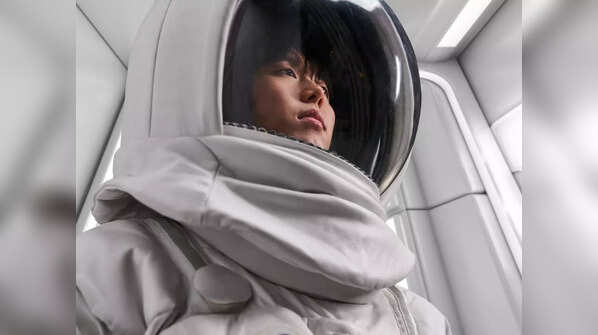What is a spacesuit? Lesser-known facts about it

These incredible life saving suits
A spacesuit is a specialized garment worn by astronauts to protect them in the harsh environment of space. Spacesuits are essential for astronauts, providing life support and protection in the harsh environment of space. They are complex, multi-layered garments designed to maintain pressure, supply oxygen, and regulate temperature. Here are some lesser-known facts about these incredible suits.
Image: Canva

Spacesuits have many layers
A spacesuit consists of multiple layers, each serving a specific purpose. The innermost layer is a liquid cooling and ventilation garment, which circulates water to regulate body temperature. The middle layers include a pressure garment and insulation, while the outer layers protect against micrometeoroids and radiation. These layers work together to ensure the astronaut’s safety and comfort, allowing them to perform tasks in the vacuum of space without risking their health.
Image: Canva

They are custom fitted for each astronaut
Each spacesuit is custom-fitted to the astronaut who will wear it. This ensures maximum comfort and mobility, which are very important for performing complex tasks during spacewalks. The fitting process includes detailed measurements and adjustments, often involving multiple fittings and modifications. This personalized approach helps prevent issues like chafing and pressure points, which could become serious problems during long-duration missions.
Image: Canva

They have a built-In toilet system
Spacesuits are equipped with a built-in toilet system, known as the Maximum Absorbency Garment (MAG). This system is essentially an adult diaper that allows astronauts to relieve themselves during long spacewalks without having to return to the spacecraft. The MAG is designed to handle both liquid and solid waste, ensuring that astronauts can stay focused on their tasks without worrying about basic bodily functions.
Image: Canva

Gloves with fingertip heaters
The gloves of a spacesuit have built-in heaters at the fingertips. These heaters help keep the astronaut’s fingers warm in the extremely cold temperatures of space, which can drop to -250 degrees Fahrenheit in the shade. Maintaining dexterity is crucial for handling tools and performing tasks during spacewalks. The gloves are also designed to provide a good grip and tactile feedback, despite the thick layers of insulation.
Image: Canva

Communication capabilities
Spacesuits have integrated communication systems, allowing astronauts to stay in contact with their team and mission control. The helmet includes microphones and speakers, ensuring clear communication even in the vacuum of space. This system is vital for coordinating activities, receiving instructions, and reporting back on progress. The communication system also includes noise-canceling technology to filter out the sounds of the suit’s life support systems.
Image: Canva

Spacesuits have drinking water access
Astronauts have access to water through a small drinking tube inside the helmet. This tube is connected to a water supply in the suit, allowing them to stay hydrated during spacewalks. Hydration is vital for maintaining focus and energy levels, especially during physically demanding tasks. The water supply is carefully monitored and managed to ensure that astronauts have enough to drink without adding unnecessary weight to the suit.
Image: Canva

Emergency oxygen supply
Spacesuits are equipped with an emergency oxygen supply, known as the Secondary Oxygen Pack (SOP). This backup system can provide oxygen for up to 30 minutes in case of a primary system failure. It ensures that astronauts have enough time to return to the spacecraft safely. The SOP is designed to activate automatically if the primary oxygen supply is compromised, providing an additional layer of safety for astronauts working in the harsh environment of space.
Image: Canva









